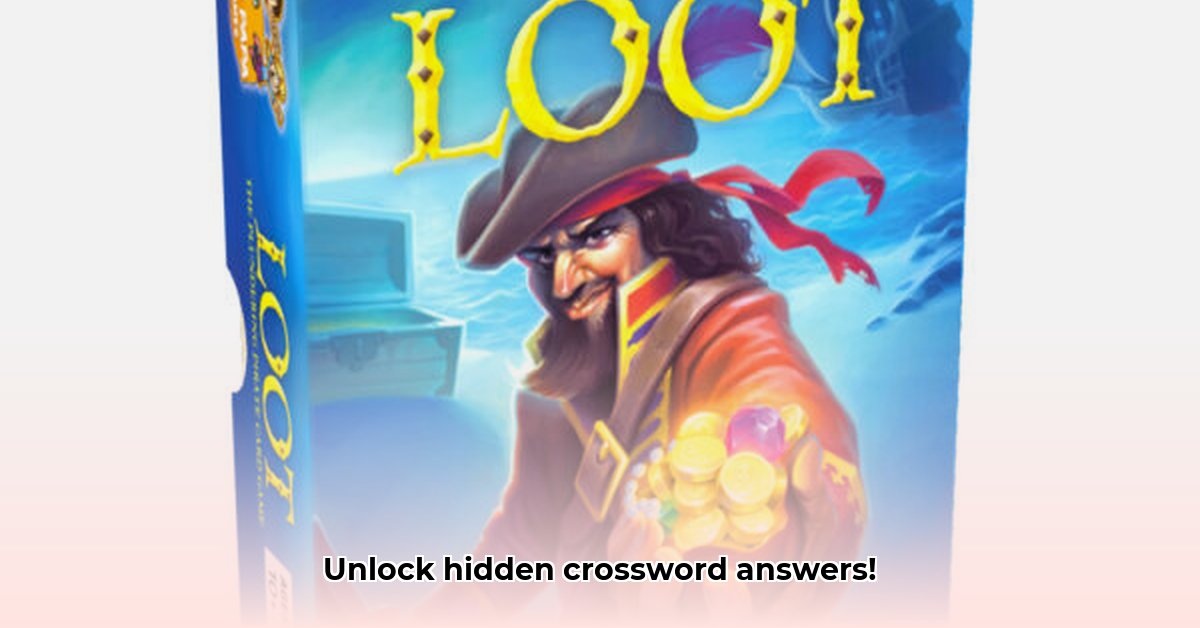
Unpacking the "Loot (4)" Mystery: Why This Clue is Tricky
Right, so you're staring at a crossword clue that simply says "Loot (4)". Looks straightforward, right? Think again! This seemingly simple clue is a bit of a wolf in sheep's clothing, with a surprising number of potential answers. The challenge lies in the word "loot" itself – it's wonderfully ambiguous. It can refer to stolen goods, winnings, treasure, or even the act of acquiring such things. This lack of specificity is precisely what makes it a tricky crossword puzzle. For more crossword help, check out these helpful resources. But don't worry, this guide will equip you with the strategies to conquer this puzzle!
Smart Strategies for Solving "Loot (4)"
Here's a step-by-step plan to help you crack this seemingly simple four-letter clue.
1. Brainstorming Synonyms: Thinking Outside the Box
Forget the typical definition of "loot" for a moment. Think about the various ways someone might acquire something valuable. Was it taken forcefully? Secretly? Fairly won? Consider different scenarios. This will help unearth unexpected four-letter possibilities. For example, words like "GAIN", "HAUL", "BOOT", "PLUN" might come to mind. (Note: "PLUN" is short for plunder.)
2. Is it a Noun or Verb? That's the Question!
This is a key differentiator that many solvers miss. Is the "loot" a noun (the thing itself), or a verb (the action of looting)? This significantly impacts your search. If it's a noun, you're looking for something acquired, like "SWAG" (think "swag bag"). If it's a verb, you might consider something like "SNAG" or "LIFT." Don't forget this vital step!
3. Grid Analysis: Using Context to Your Advantage
Never underestimate the power of the surrounding words! Crossword puzzles are interconnected. Look closely at the letters already filled in around your mystery four-letter word. These letters provide valuable clues and help eliminate improbable answers. For example, if there's a "T" intersecting the second letter, you know your word must have a "T" in that position. This dramatically reduces the number of possibilities before you.
4. Theme Recognition: Context is King
Does your crossword have an overarching theme? A pirate-themed puzzle, for instance, might favour words like "BOOTY" or "PLUN". A sports-themed crossword could point towards "GAIN" or "HAUL". Understanding the theme dramatically increases your chances of finding the right answer.
5. Advanced Tactics (Optional, but Handy):
- Online Crossword Solvers (Use Wisely!): These tools exist to help, but don't rely on them blindly. Use them only after you’ve thoroughly considered the other steps, to test your solutions or brainstorm potential leads.
- Letter Frequency Analysis: A Statistical Approach: Certain letters appear more frequently in English words than others. Keeping this in mind can help eliminate improbable answers.
Example Scenarios: Putting it All Together
Let's solidify these strategies with a couple of common "Loot (4)" scenarios.
Scenario 1: The intersecting letters reveal a "T" at the beginning and an "A" at the end. This immediately narrows down your options to four-letter words starting with "T" and ending with "A."
Scenario 2: The crossword’s theme is focused on outer space. Words related to space exploration, like "GAIN" (gaining altitude) suddenly become much more likely.
Conclusion: You've Got This!
Solving ambiguous crossword clues like "Loot (4)" requires a blend of creative thinking, careful analysis, and strategic planning. By incorporating these techniques, you'll find yourself successfully navigating even the trickiest of crossword challenges. Remember, practice makes perfect! The more crosswords you tackle, the sharper your skills will become. So, keep at it, and you'll soon be a crossword-solving champion!